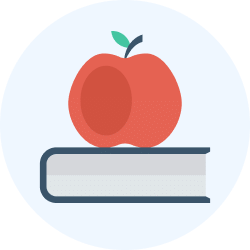Class 2 Exam > Class 2 Videos > Science for Class 2 > Uses of Plants
Uses of Plants Video Lecture | Science for Class 2
FAQs on Uses of Plants Video Lecture - Science for Class 2
| 1. What are the different parts of a plant and their functions? |  |
Ans. Plants have various parts, each with its own specific function. The roots anchor the plant in the soil, absorb water and nutrients, and store food. The stem supports the plant, transports water and nutrients from the roots to the other parts, and holds the leaves up to the sunlight. The leaves are the main site of photosynthesis, where the plant produces food using sunlight, water, and carbon dioxide. The flowers are responsible for reproduction, attracting pollinators, and producing seeds. Finally, the fruits protect the seeds and aid in their dispersal.
| 2. How do plants make their own food? |  |
Ans. Plants make their own food through a process called photosynthesis. They use sunlight, carbon dioxide from the air, and water from the soil to produce glucose (a type of sugar) and oxygen. This process takes place in the chloroplasts, which are present in the cells of the leaves. Chlorophyll, a pigment in the chloroplasts, absorbs sunlight and converts it into chemical energy. The energy is then used to convert carbon dioxide and water into glucose, which the plant uses as food.
| 3. Why are plants important for the environment? |  |
Ans. Plants play a crucial role in the environment. They release oxygen during photosynthesis, which is essential for the survival of all living organisms. Plants also absorb carbon dioxide, a greenhouse gas, and help regulate the Earth's climate. They provide habitats for various animals and insects, contribute to the water cycle by releasing moisture through transpiration, and prevent soil erosion with their root systems. Additionally, plants provide food, medicine, and raw materials for human use.
| 4. How do plants reproduce? |  |
Ans. Plants reproduce in different ways. Some plants reproduce through seeds, where flowers are pollinated by insects, birds, or wind, and develop into fruits that contain seeds. These seeds can then be dispersed by animals or wind, eventually germinating into new plants. Other plants reproduce asexually through methods such as vegetative propagation, where new plants grow from stems, roots, or leaves of the parent plant. Examples include plant runners, bulbs, tubers, and cuttings.
| 5. How do plants adapt to their environment? |  |
Ans. Plants have various adaptations that help them survive in different environments. In hot and dry areas, some plants have developed thick waxy leaves or spines to reduce water loss through transpiration. They may also store water in their stems or leaves. In cold regions, plants may have needle-like leaves to reduce water loss and prevent snow buildup. Some plants living in shady areas have larger leaves to capture more sunlight, while those in water have air-filled tissues for buoyancy. These adaptations enable plants to thrive in diverse habitats.
Related Searches

















